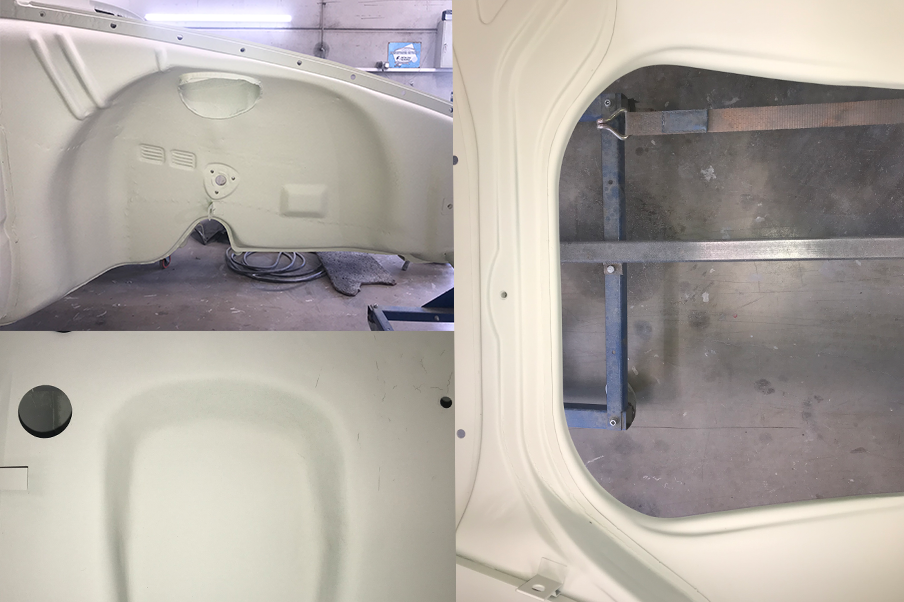The Fuchs wheel – how one car’s design shaped a legendary wheel
The Fuchs wheel with its ‘clover leaf’ design is synonymous with Porsche and one of the most recognised wheel designs in the world. The final design of the wheel was created by Ferdinand Alexander Porsche and in this blog we propose just how that unique design came about.
In 1965 Porsche set about creating the fastest car they had yet made – the 911S. This high-performance sports car would deliver 160 BHP and be launched in 1967.
A key to spritely performance in a sports car is high power and low weight. With the 911 already in production, Porsche was limited by what it could do to remove sprung weight from the car. Stripping out sound proofing and replacing glass windows with acrylic was acceptable for the racetrack but not in a luxury sports car. A major source of overall weight in the 900 series cars – the 911 and the 912 – were the steel two-part wheels they used. Reducing un-sprung weight at the axle would bring major performance and handling improvements because the kilos saved in each wheel would be equivalent to a much greater weight saving in sprung weight – more than could ever be achieved by removing or lightening the car’s interior or fittings.
Porsche had in the past been contacted by a variety of wheel providers with designs for lightweight cast alloy wheels but during testing, these wheels were found to be fragile and unable to handle the required loads. Back in the second World war, Porsche had worked with the company Otto Fuchs AG, that had produced forged aluminium wheels for a lightweight tank they had designed. By 1965 Fuchs were experts in light weight alloys for use in the aviation industries, so Porsche approached them again and asked if they could create a mass-produced alloy wheel that was at least three kilograms lighter than the steel wheels in current use and strong enough for both road and race use. Shaving off those three kilograms per wheel would be equivalent to stripping a massive seventy-two kilograms from the overall weight of the car.
Otto Fuchs solution was radical. A one-piece forged aluminium wheel created by pressing solid alloy blocks under extreme pressure. This unique process reduced the grain and voids in the alloy billet producing very high-strength parts and had never been used in any road automotive application before.
The first Fuchs prototype wheels were presented to Porsche in May 1965 and featured a design by the Fuchs team. These prototype wheels were very different from the final design adopted because Ferdinand Alexander Porsche felt that the design did not match the overall design language of the new 900 series cars. Along with the Porsche design team he very quickly changed the shape of the five connecting pieces to be more harmonious with the new vehicles. This design became known as the ‘Kleeblatt’ in German as it resembled a four-leaf clover.
The Porsche 911S became the first production car to use forged wheels and the new wheel design became an instant hit. The ‘Kleeblatt’ design has simply come to be known as the ‘Fuchs’ wheel and over 55 years later is still made and much imitated.
Today, Otto Fuchs AG is the largest manufacturer of forged wheels to the automotive industry.
I have always wondered just where the inspiration for the rounded, soft corners of the petals on the final Fuchs wheel came from and how they were able to so quickly came up with a new design. Did the Porsche designers really pick up books of wild-flowers for design inspiration?
Recently I was looking at a short wheel-base Porsche shell in our workshop which had just gone into a white etch primer coat. This light colour revealed various contours and shapes that are hard to see on a dark coloured shell. Walking around the car I was amazed by how many parts of the shell feature those same soft cornered ‘petal’ shapes that are the main features of the Fuchs wheel. The shape of the inner wheel wells, the surrounding structure of the fuel tank and the steering column recess in the front trunk are just some areas where those same ‘petal’ shapes are evident on the shell. Ferdinand Alexander Porsche had been put in charge of the final design of the 900 series cars and would have created and known about these design shapes on the shell intimately. I believe that he was able to immediately create a new harmonious design for the Fuchs wheel by simply directly transferring some of the existing design language he had created for the shell to the new wheel.
Look at the pictures here and see if you agree!


